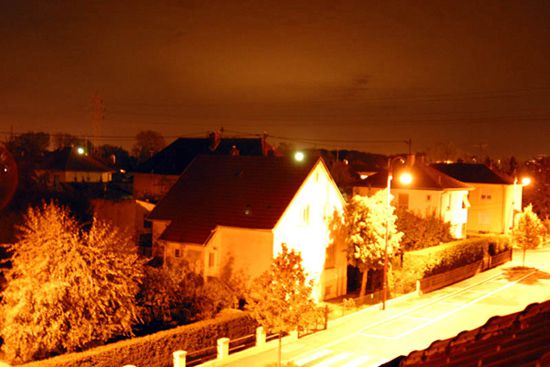-
 Angular size
Angular size
-
 Selective serotonin reuptake inhibitor
Selective serotonin reuptake inhibitor
-
 Primate
Primate
-
 Phase velocity
Phase velocity
-
 DMT
DMT
-
 Ghost lineage
Ghost lineage
-
 Species
Species
-
 Crystal system
Crystal system
-
 AJAX
AJAX
-
 Aspen
Aspen
-
 Concavenator corcovatus
Concavenator corcovatus
-
 Genotoxic
Genotoxic
-
 Monophyletic
Monophyletic
-
 Google
Google
-
 Interneurone
Interneurone
-
 Teratogenesis
Teratogenesis
-
 Ross, Frank
Ross, Frank
-
 Graben
Graben
-
 Ecology
Ecology
-
 Thermoplastic
Thermoplastic
-
 Deciduous forest
Deciduous forest
-
 PVLAS
PVLAS
-
 Ontogeny
Ontogeny
-
 Osmosis
Osmosis
-
 Fibroblasts
Fibroblasts
-
 Residue
Residue
-
 Neurite
Neurite
-
 Microblogging
Microblogging
-
 Pulmonary disease
Pulmonary disease
-
 Coal
Coal
Light pollution
Light pollution is excessive light production at night in an open environment, produced by man and leading to, decreased visibility of the surroundings. With regard to animals, light pollution can affect their biological rhythms, their nocturnal activities or their migration. Light pollution may affect people by altering biological rhythms and disturbing sleep. Moreover, it reduces visibility of the night sky, and in economic terms, represents useless spending when the light produced is directed towards the sky.
Public lighting is the main culprit. When a city is seen from a distance, the urbanised zone appears to be topped with an orange coloured gaseous dome (from sodium vapour lamps).
Astronomy and environmental defence organisations have brought this problem to the attention of city and town authorities. Better adapted lighting solutions considerably reduce light pollution and generate savings.
 Light from public lighting, when it is poorly designed (here, spherical lamps) sends a large amount of its light towards the sky, which diffuses in all directions, creating a halo. © Martial Figenwald
Light from public lighting, when it is poorly designed (here, spherical lamps) sends a large amount of its light towards the sky, which diffuses in all directions, creating a halo. © Martial Figenwald
Latest
Fill out my online form.



